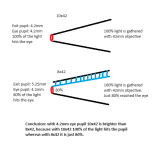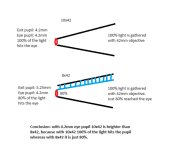Jason Bugay Reyes
Well-known member

So with the help of spotlight at nite and using 10x42 and 10x32 hand held for nocturnal wildlife, which one will resolve better details if the user is around 53 years old?









